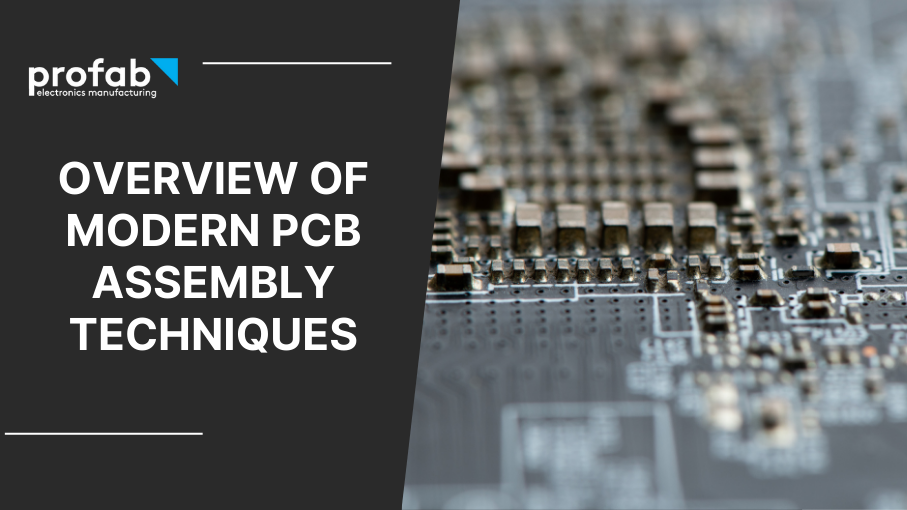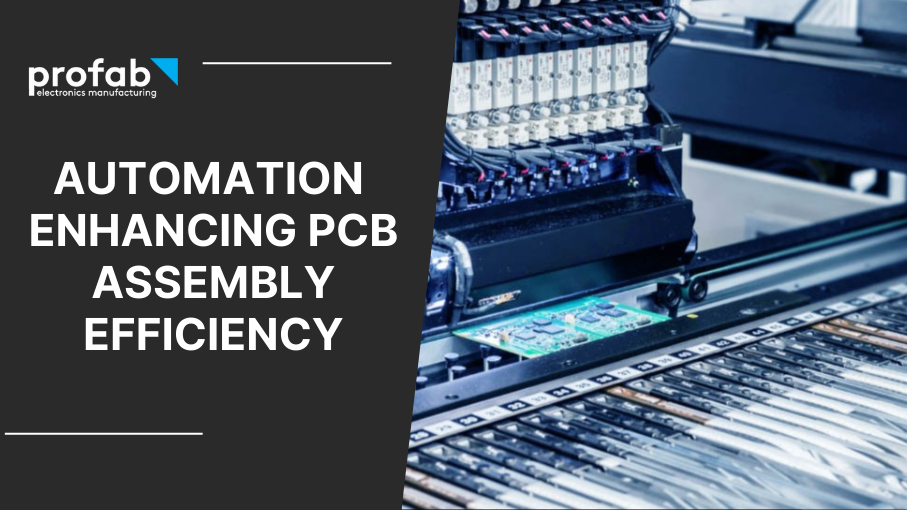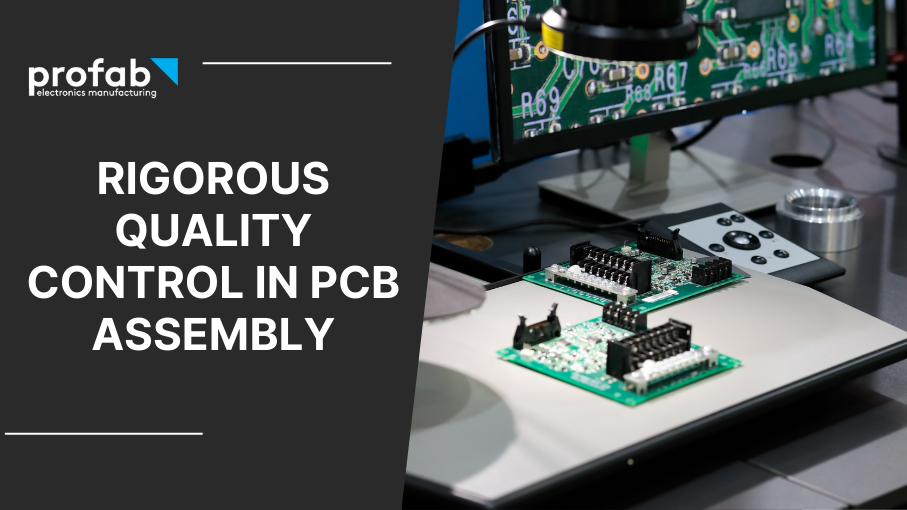
How COVID-19 Impacted the PCB Assembly Industry: An In-Depth Exploration
These challenging times have significantly disrupted supply chain manufacturing and slowed production
The onset of the COVID-19 pandemic created unprecedented disruptions and transformations in the PCB assembly industry. From supply chain challenges to the rapid acceleration of automation and technological advancements, the industry has undergone significant shifts. This comprehensive look delves into the multifaceted impact, highlighting key areas such as component lead times, increases in automation, planning process improvements, sustainability focus, and digital transformation.
Component Lead Times and Supply Chain Disruptions
Extended Component Lead Times
The PCB assembly industry has been significantly affected by extended component lead times due to the pandemic's impact on global production and shipping processes. PCB manufacturers found themselves grappling with widespread delays, impacting the timely delivery of essential PCB components such as capacitors, resistors, and connectors. To adapt to these challenging circumstances, manufacturers began seeking alternative sources, negotiating with new suppliers, and implementing flexible procurement strategies. The focus on agility and responsiveness became paramount, underlining the need for streamlined communication and strategic decision-making within the PCB assembly sector.
Supply Chain Visibility and Diversification:
In response to the unpredictability that marred the PCB assembly industry, there was an increased emphasis on supply chain resilience. Many companies invested heavily in real-time tracking systems, predictive analytics, and supplier diversification, particularly focusing on PCB component suppliers. These measures facilitated more transparent and robust supply chain management, allowing businesses to respond proactively to sudden changes in availability or pricing. By investing in these technologies and diversifying their supply base, the PCB assembly industry could better navigate the volatile global market and ensure a more stable supply of critical components.
Localization and Nearshoring:
The PCB assembly industry also saw a trend toward localization and nearshoring as part of a broader strategy to reduce dependency on international shipping and transportation. Some PCB assembly companies began shifting from global to regional suppliers, securing relationships with local manufacturers of essential PCB components. This nearshoring helped mitigate the risk of global disruptions, such as tariffs or transportation delays, and provided quicker access to necessary components. By embracing this approach, the PCB assembly industry was able to build more resilient supply chains that were less susceptible to global economic shifts.
Strategic Inventory Management:
The uncertainty triggered by fluctuating demand and supply chain disruptions prompted many manufacturers within the PCB assembly industry to reevaluate their inventory strategies. Balancing the need for buffer stocks with the risks of overstocking became a complex task requiring careful planning and sophisticated analytical tools. Demand forecasting, utilization of big data, and real-time inventory tracking played a crucial role in this fine-tuning process. By implementing these strategies, manufacturers could optimize their stock levels, minimize waste, and ensure that the right PCB components were available at the right time. This strategic inventory management approach fostered greater efficiency and resilience within the PCB assembly sector.
Increases in Automation and Remote Operations
Accelerated Adoption of Automation:
The PCB assembly industry has witnessed an accelerated adoption of automation, especially during the pandemic, when workforce restrictions challenged traditional production methodologies. Automation, employing technologies like robotics and artificial intelligence, played a crucial role in maintaining production levels within the PCB assembly lines. Emphasizing the efficiency and quality benefits of mechanized processes, automation allowed manufacturers to preserve production timelines, reduce human error, and increase consistency across the assembly processes. This trend demonstrates the growing recognition of automation as a vital element in the modern PCB assembly landscape.
Remote Monitoring and Control:
Another significant development in the PCB assembly industry is the rise of remote monitoring and control capabilities. Remote work technologies enabled engineers, technicians, and other professionals to oversee and control production from distant locations. This decentralization of control led to more flexible operations, opening up opportunities for global collaboration and real-time adjustment to production parameters. By embracing remote operations, the PCB assembly industry has positioned itself to adapt quickly to changing market demands and enhance its overall responsiveness.
Cybersecurity Measures:
With the increased emphasis on remote access and digital connectivity in the PCB assembly process, cybersecurity has become paramount. The transition to remote operations necessitated investments in secure communication channels, encryption technologies, and robust monitoring systems to ensure the integrity and confidentiality of production data. Companies within the PCB assembly industry have had to adopt comprehensive cybersecurity protocols, conducting regular audits and implementing multi-factor authentication to guard against potential breaches. These measures not only protect sensitive information but also foster a culture of security awareness and responsibility that is integral to the continued success of remote and automated operations within the PCB assembly sector.
Improvements in Planning Processes and Risk Management
Agile Production Planning:
The need for agility in the PCB assembly industry has never been more pronounced, especially given the uncertainty of the global market. Shorter planning cycles, more frequent reviews, and quick adaptability became essential components of production planning. By leveraging predictive analytics and scenario planning tools, manufacturers could navigate rapidly changing conditions with greater efficiency and precision. The integration of real-time data and forecasting algorithms allowed for more responsive production schedules, aligning closely with customer demands and market trends. Agile production planning has emerged as a vital methodology within the PCB assembly industry, driving optimization, flexibility, and resilience.
Enhanced Risk Management Strategies:
Recognizing the complex nature of risks in the PCB assembly environment, manufacturers developed new and enhanced risk mitigation strategies that integrated considerations of production, employee safety, legal compliance, and market dynamics. By employing robust analytical tools and cross-functional collaboration, these strategies enabled a more holistic approach to risk management. They helped identify potential vulnerabilities, prioritize mitigation measures, and ensure alignment with regulatory standards. These comprehensive risk management strategies fortified the PCB assembly industry against unforeseen challenges and contributed to more sustainable and resilient operations.
Collaboration with Suppliers and Partners:
The PCB assembly industry also saw a trend toward enhanced collaboration with suppliers and partners. By fostering more coordinated and transparent relationships, companies could respond more effectively to challenges and synchronize their efforts. This collaboration extended across various aspects of the supply chain, from component sourcing to distribution, creating a more interconnected and resilient ecosystem within the industry. Whether through shared data platforms or joint problem-solving sessions, this increased collaboration helped streamline processes, minimize delays, and build trust among stakeholders in the PCB assembly field.
Scenario-Based Contingency Planning:
Many companies within the PCB assembly industry developed scenario-based contingency plans, an essential tool in preparing for various potential disruptions. By simulating different scenarios and devising strategic responses, these plans provided a clear roadmap for navigating unexpected obstacles with minimal impact on operations. Whether facing supply chain disruptions, regulatory changes, or technological failures, scenario-based contingency planning offered a structured approach to adaptability and problem-solving. By anticipating potential issues and having actionable plans in place, the PCB assembly industry could respond proactively rather than reactively, preserving both efficiency and integrity in a dynamic market environment.
Focus on Sustainability and Social Responsibility
Sustainable Manufacturing Practices:
The PCB assembly industry has seen a significant surge in interest in sustainable manufacturing practices. Emphasizing energy efficiency, waste reduction, and responsible sourcing of materials, these practices have become integral to modern, resilient manufacturing operations. Implementing green technologies, recycling programs, and eco-friendly materials, many manufacturers have shifted towards a more sustainable production paradigm. This transition aligns with global environmental initiatives and reflects a growing recognition within the PCB assembly industry of the importance of environmental stewardship. Sustainable manufacturing is no longer a peripheral concern; it is a central component of industry strategy and ethical business conduct.
Emphasis on Employee Welfare:
Alongside a focus on sustainable practices, there has been a concerted emphasis on employee welfare within the PCB assembly industry. New safety protocols have been instituted to ensure physical well-being, while mental health support and flexible work arrangements have become essential in fostering a more human-centric approach to business. Whether through telecommuting options, employee assistance programs, or comprehensive health and safety training, the industry has recognized the value of its workforce and has taken meaningful steps to support its members. This focus on employee welfare not only enhances morale but also contributes to productivity and retention within the PCB assembly field.
Community Engagement and Support:
Some manufacturers within the PCB assembly industry have extended their commitment to social responsibility through community engagement and support initiatives. Whether producing essential medical equipment during critical times or providing resources and education to local communities, these efforts demonstrate a broader sense of responsibility and connection to society at large. By engaging with communities and contributing positively to societal needs, the PCB assembly industry is building bridges and establishing itself as a conscientious and proactive member of the global community.
Long-Term Sustainability Planning:
The pandemic's unprecedented challenges highlighted the need for long-term sustainability planning within the PCB assembly industry. Aligning immediate responses to crises with long-term environmental and social goals has become a priority. Strategic sustainability planning now encompasses everything from reducing the carbon footprint to investing in renewable energy sources and fostering diversity and inclusion in the workplace. By integrating sustainability into long-term business strategies, the PCB assembly industry is not only adapting to current challenges but also shaping a future that is environmentally sound, socially responsible, and economically viable. This comprehensive approach to sustainability reflects a maturing industry that recognizes its role and responsibilities within the broader context of global society and the environment.
Accelerated Digital Transformation
Implementation of Digital Tools and Platforms:
The PCB assembly industry has embraced a range of digital tools and platforms to support continuity and innovation amid unprecedented challenges. From virtual collaboration tools that enable real-time communication between designers and manufacturers to advanced simulation software for PCB design and testing, digital technologies have become an integral part of the industry. Utilizing cutting-edge digital solutions like 3D modeling, computer-aided design (CAD), and cloud-based management systems, the PCB assembly industry has managed to drive growth, enhance competitiveness, and align itself with modern manufacturing demands.
Investment in Research and Development (R&D):
Emphasizing innovation and future resilience, many companies within the PCB assembly industry have increased their investment in Research and Development (R&D). This investment extends to exploring new materials, techniques, and technologies that can transform the way PCBs are designed, assembled, and tested. From experimenting with advanced soldering methods to researching eco-friendly materials, the focus on R&D ensures that the PCB assembly industry remains at the forefront of technological advancements. This dedication to innovation not only fosters continuous improvement but also positions the industry to adapt to future challenges and opportunities.
Data-Driven Decision Making:
The adoption of data analytics and AI-enabled decision-making tools has revolutionized the PCB assembly industry, providing deeper insights into various aspects of the production process. By collecting and analyzing large volumes of data, from supply chain dynamics to quality control metrics, manufacturers are able to make more informed and timely decisions. Machine learning algorithms and predictive analytics have enhanced forecasting accuracy, allowing for more agile production planning and inventory management within the PCB assembly sector. This data-driven approach empowers businesses to operate more efficiently and respond to the fast-changing market environment with precision and confidence.
Emergence of New Business Models:
The pandemic has prompted the exploration of new business models and service offerings within the PCB assembly industry, leveraging digital platforms to reach new markets and offer value-added services. From on-demand PCB prototyping to subscription-based design tools, these new business models are reshaping how the industry operates and interacts with customers. By integrating e-commerce solutions, offering remote consultation, and utilizing digital marketing strategies, companies in the PCB assembly field are expanding their reach and diversifying their offerings. This digital transformation is not merely a response to immediate challenges but a strategic shift that positions the PCB assembly industry to thrive in an increasingly interconnected and digitalized global economy.
Summing Up the Impact of Covid
The multi-dimensional impact of the COVID-19 pandemic on the PCB assembly industry underscores both the challenges and opportunities of this extraordinary period. From supply chain adaptations to technological advancements and a renewed focus on human and environmental factors, the industry's response has been complex and transformative.
These changes not only enabled survival during the crisis but also set the stage for ongoing growth and innovation. The lessons learned and the strategies developed will likely continue to influence and shape the PCB assembly industry well into the future, defining a new era of resilience, efficiency, and socially responsible business practices.
About Profab Electronics
Profoundly embedded in the electronics manufacturing sector, Profab Electronics has been steadfast in its commitment to deliver excellence for over three decades. Our unparalleled experience, fortified by our stringent quality standards, positions us as a trusted partner in the realm of Electronics Manufacturing Services (EMS).
We're an ISO 9001 and AS9100 certified company, and our adherence to these globally recognized standards attests to our unyielding quest for quality. Our team comprises experts who hold formative training on the latest IPC standards, ensuring that we consistently produce electronic products of the highest caliber.
Our proficiency lies in PCB assembly, offering a spectrum of services ranging from Surface Mount (SMT) to Through-Hole Assembly. From the initial stages of prototyping to high volume pcb assembly, we offer comprehensive solutions to meet client requirements.
At Profab Electronics, we synergize our expertise and experience to deliver high-quality electronic products. Our unwavering commitment to quality, innovation, and customer satisfaction has established Profab Electronics as a leader in the electronics manufacturing industry. Trust us to bring your technological visions to life.
Latest Posts

Learn about our state-of-the-art Surface Mount and Through-Hole Technologies, sophisticated soldering processes, and rigorous quality control methods that define today's industry standards.

Learn about our advanced component placement, solder paste printing, and automated inspection systems that revolutionize the assembly process.

Discover how our adherence to ISO 9001 and AS 9100 standards, IPC solder training, and meticulous inspection processes ensure the precision and accuracy of every PCB we produce, underpinning our unwavering commitment to quality.